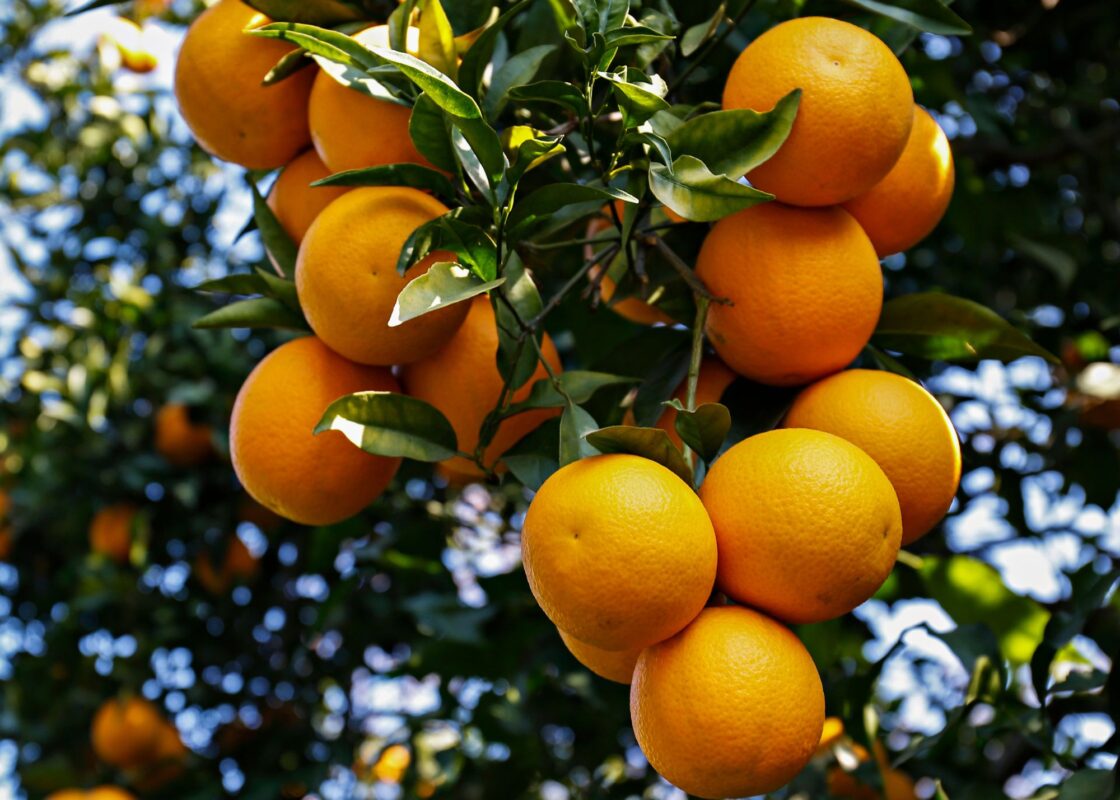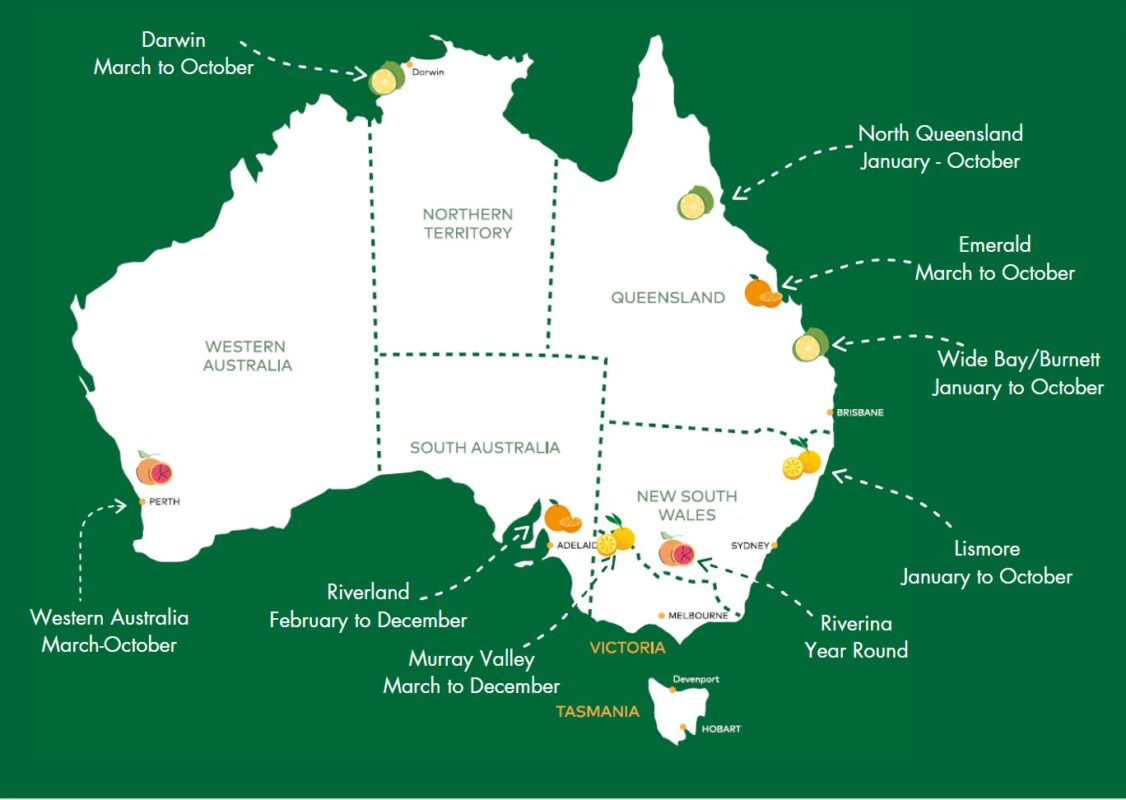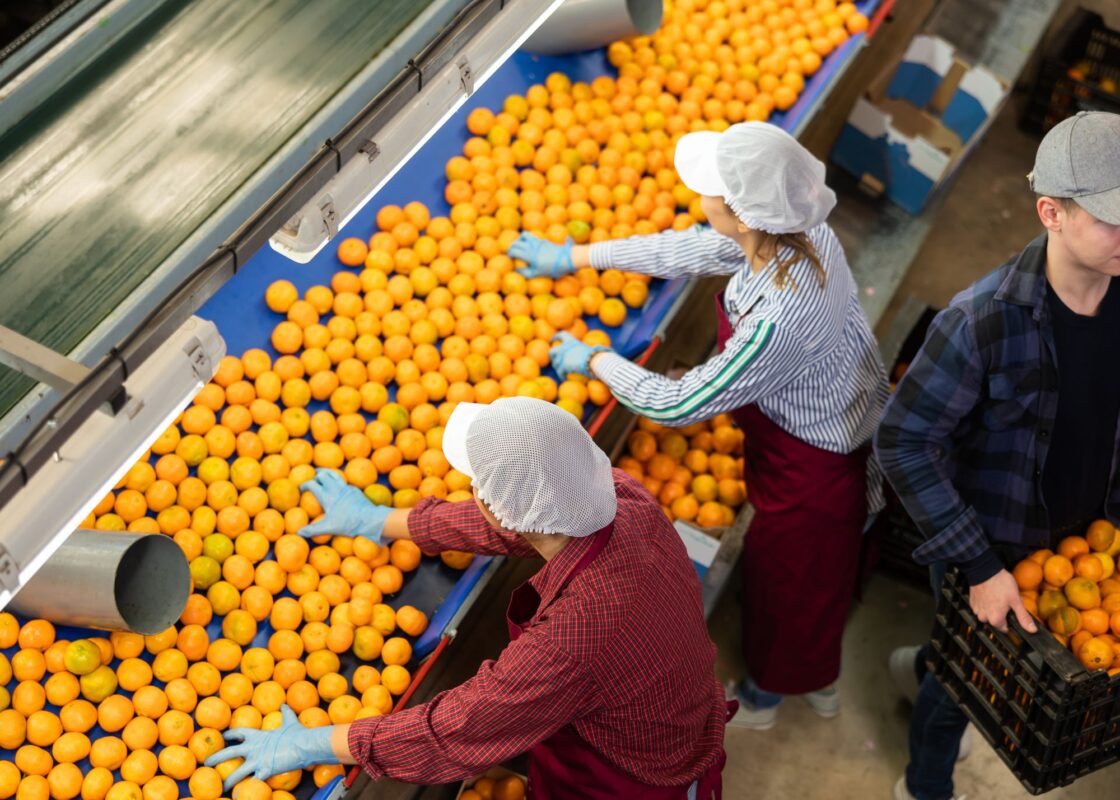The landscape of Australia’s citrus farming Citrus orchards flourish in many of Australia's regions, providing year-round employment opportunities.
The industry’s backbone is its orange varieties, complemented by lemons, limes, mandarins and grapefruits, each variety having its specific harvest season. Other less common citrus fruits include tangerines, pomelos, clementines and tangelos.
The sector is vital to Australia’s agricultural output, with 815,750 tons produced in the 2022/23 season, valued at $977.1M.

Key Citrus Regions
Riverina, NSW, and Murray Valley, VIC: These regions stand as the heartland of Australia’s citrus production, renowned for their winter Navel oranges, cherished for the fresh market, and Valencia oranges, the backbone of the juicing industry.
Riverland, SA: A versatile citrus haven, Riverland specialises in a wide range of citrus fruits, including oranges, mandarins, lemons, and limes. The region’s adaptability allows for an extended harvest season, ensuring a steady supply of citrus fruits across different months.
Wide Bay/Burnett and Mareeba, QLD: Queensland’s contribution to the citrus industry is significant, with Wide Bay/Burnett and Mareeba leading the charge. These areas are pivotal in producing Australia’s largest volumes of mandarins and a substantial share of lemons and limes.
Western Australia and the Northern Territory: While smaller in production scale, WA and NT are essential to achieving near year-round availability of citrus in Australia. WA’s coastal regions, from Harvey to Kununurra, are expanding their citrus operations.

What to expect when working on a citrus farm
Field Work
- Hands-On Approach: All picking is done manually, whether you’re directly employed by a farmer or through a labour hire contractor.
- Weather Dependent: Rain might pause work, but it’s rare in the southern citrus regions, known for their dry climates. However, the chill of winter mornings means work starts only after the dew lifts, offering a reprieve for those needing a bit more sleep.
- Picking Techniques: Mastery over methods is crucial. For mandarins, the delicate use of secateurs; for oranges, ensuring the ‘button’ remains intact. The initial learning curve is steep but essential, as improper technique can lead to unsaleable fruit and potentially short-lived employment.
- Physicality and Persistence: The job’s physical demands are undeniable, with the first week often being a test of endurance. Climbing ladders and carrying heavy picking bags is taxing, but it’s also a period to hone skills and build necessary muscle strength.
Inside the Packing Shed

- Varied Roles: Inside work ranges from sorting and grading on conveyor belts to more physical tasks like carton folding and stacking the pallets. Attention to detail is vital; the fruit must meet specific size, colour, and quality criteria.
- Equipment Operation: Forklift drivers are in high demand, moving stock and ensuring the smooth operation of the shed. A forklift licence opens doors to these sought-after positions.
Employment Conditions and Rewards
- Training: New workers receive training in the correct picking techniques and safety protocols, including ladder use and handling tools.
- Piece Rates vs. Hourly Pay: Pay varies, with piece rates typical in the fields, rewarding speed and efficiency. In contrast, packing shed roles may offer hourly rates, providing a steady income regardless of the pace.
- Seasonal Opportunities: Citrus work offers the chance to stay in one location for an extended period, as harvests can last several months. This stability is a significant advantage for those looking to immerse themselves in the rural community and save money.
Explore the opportunities that await in the citrus sector to plan your next adventure amidst Australia’s vibrant citrus orchards.
